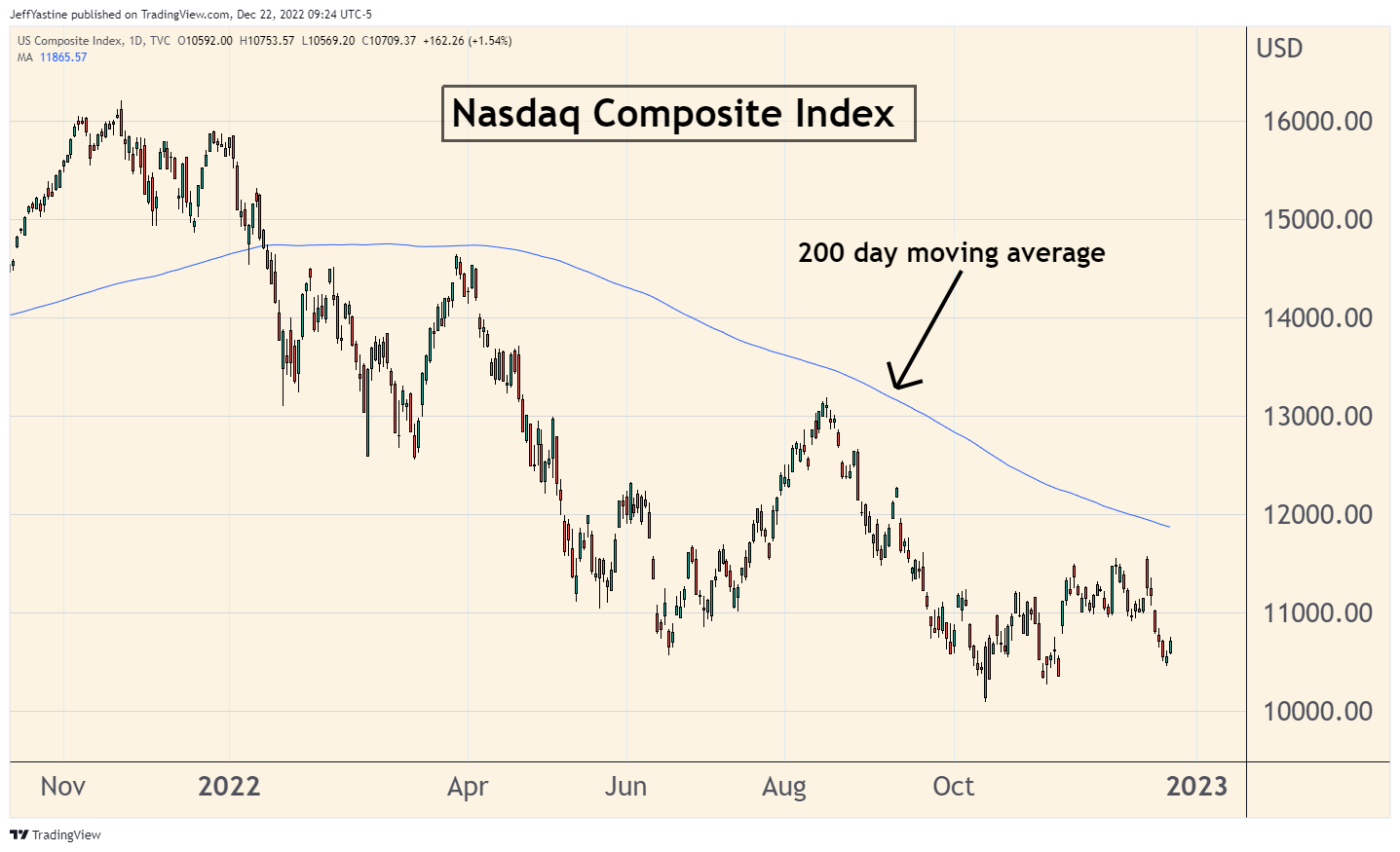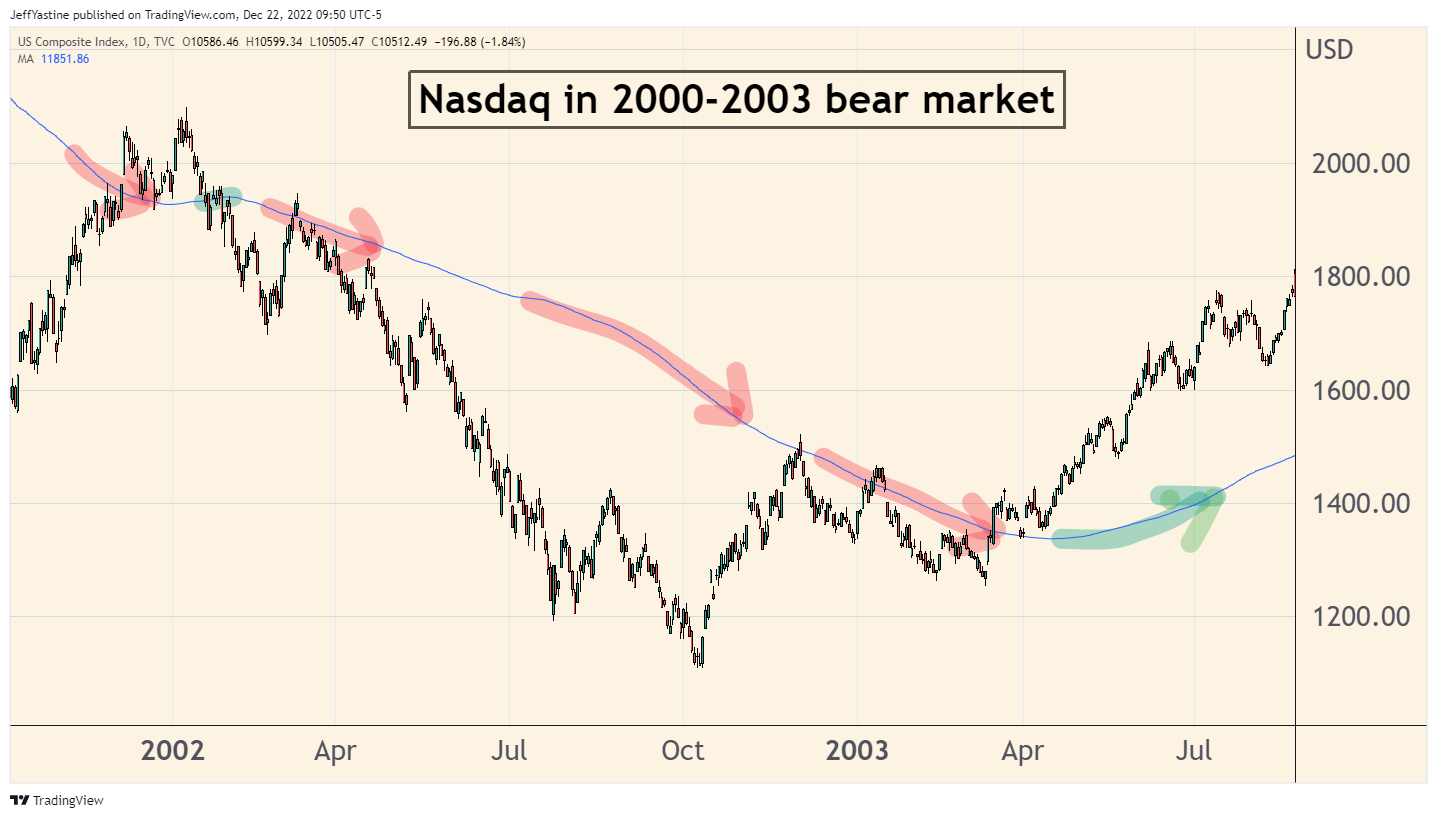Are You on the "Right Side" of the Market?

NOTE: First of all, I'd like to wish everyone a great holiday. I won't be writing a Market Update note this weekend, but suffice to say I'll be watching the markets when the opening bell rings next week!
It's probably one of the THE most-asked questions I receive from readers, video viewers, as well as the "bookers" who sometimes ask me to appear on video and radio programs...
- Am I a fundamental analyst - someone who looks at a company's profits, revenue, and other business numbers?
- Or am I a technical analyst who stares at charts, in order to somehow predict whether a stock or index is about to go up or down?
I'm both. To me, technical and fundamental analysis are 2 tools in a toolbox.
Both are helpful sometimes in explaining what's happening. But let's face it, there's also a great deal of "randomness" in the markets. There's a lot of confusion.
It's the nature of the markets that they defy consistent, accurate predictions except that "they will fluctuate," as JP Morgan once famously said to a reporter.
So how do we know if we're on the right side of the market or not?
To me, the "right side" is whenever I think the odds, the probabilities, are in my favor, that the stocks I own - or want to buy - are going to move higher in price.
I use technical analysis to help me figure that out on a day to day, week to week basis.
Figuring the "Right Side"
I try to keep my technical analysis tools very simple. To me, one of the most powerful is to look at what's called the "200 day moving average."
Keep in mind, there's nothing magical about it. You could use a 190 day, or 202 day moving average. The point is to have a reference point, a marker, that smooths out the day-to-day ups and downs and shows the overall direction.
Here's what that average - the blue line in the chart below - looks like for the Nasdaq index right now:

Ask yourself 2 questions...
- Is my stock or market index above or below its 200-day moving average?
- Is the 200-day moving average itself....pointed up, or down?
If a stock is above its 200-day moving average - that's good. But it's not uncommon for a stock or index to rally up to - and above - this kind of reference point, and then sink back below it days or weeks later.
So the next step is to ask whether the moving-average itself is pointed up or down? It's telling you - over the last 200 days of market activity - if the general pattern is that of higher prices or lower prices.
Here's another example from the 2000-2003 bear market below. The 200-day moving average is highlighted in red where it's pointed lower, and highlighted in green when it was pointing higher.

Notice the little nub of green on the upper left of the chart? The 200 day movinag average briefly started ticking higher - until the deepening decline of the market pulled the average lower.
Clearly, that's a false signal. The "right side" turned out to be wrong.
That's why I always try to talk about odds, about probabilities, when discussing stocks or market indexes. There are no guarantees or certainties.
But the bigger point is to try to be wrong as few times as possible (cutting our losses quickly) while having the confidence to buy - even when our guts, and popular opinion are telling us to not buy and avoid the chance for more pain.
Take another look at the 2000-2003 chart above. Look for where that bear market finally bottomed out in March/April 2003 - and began peeking above the 200 day moving average.
I remember that time. Very few people thought stocks were about to head higher at that point - not after a grinding 2-1/2 year bear market. And no one knew for sure that a new bull market was about to begin.
But that's the beauty of using even a simple reference point, like the 200 day moving average.
It cuts down on decision paralysis, and keeps us on the "right side" of the stock market's trend.
Merry Christmas & Happy Chanukah!
Jeff
Member discussion